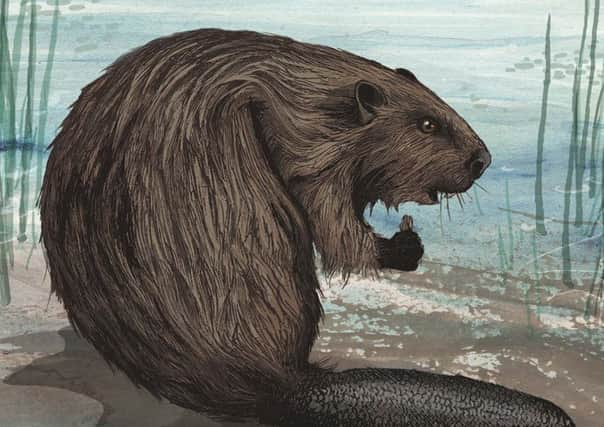Book review: Nature’s Architect by Jim Crumley


NATURE’S ARCHITECT
by Jim Crumley
Saraband, 200pp, £12.99
Nobody can say for certain when the last members of Scotland’s indigenous beaver population died out, but the consensus seems to be about 400 years ago. Recently, there have been various attempts at reintroduction – both government sanctioned and not – and these are the subject of this wise, witty and painstakingly researched book.
But today’s conservationists are by no means the first people to wonder if it might be a good idea to bring beavers back to these shores. In the course of investigating Scotland’s colourful beaver history, nature writer Jim Crumley travelled to Mount Stuart on the Isle of Bute, where, in the 1870s, John Patrick Crichton-Stuart, 3rd Marquess of Bute, apparently conducted an early beaver experiment. Delving into the Mount Stuart archives, Crumley found that in 1874 the Marquess had a walled, four-acre beaver enclosure built on his property with a stream running through it and plenty of trees to serve as raw material for dams and lodges. This he proceeded to populate with Canadian beavers, which he purchased at £10 a pop from one Charles Jamrach, a naturalist based in London. Correspondence between the two men also reveals that Jamrach sent the Marquess two female Bennett’s Wallabies to add to his menagerie, and also offered such exotic creatures as sloth bears (“would make capital pets at £10 each”).
Advertisement
Hide AdThere’s no record of what happened to the Marquess’s wallabies, or whether he ever bought himself a sloth bear, but after a brief period in which they appeared to flourish, by 1889 the Bute beavers were no more.
Crumley is unable to find any record of why the Marquess decided to carry out his beaver experiment, but with a bit of detective work and some lateral thinking he comes up with the very plausible explanation that the Marquess’s interest in architecture may have lain at the root of his fascination with the creature also known as Nature’s Architect.
Fastforward to the present day, and, following the mysterious and unauthorised release of Eurasian beavers into the waterways of rural Perthshire, Crumley is delighted to discover that he can go out and study their fabled craftsmanship almost from his back door. The chapters in which he describes his forays into what he calls Beaverland are headed “The River Diaries I-IV” and, with their singing prose, they are easily the highlights of the book. His actual beaver sightings are rare and fleeting, but even though this leaves him with nothing much to talk about except different configurations of sticks and logs, his evocative descriptions and infectious enthusiasm make for surprisingly gripping reading. And when it comes to writing of this kind there really is no substitute for time spent watching nature take its course. Crumley’s great strength, in these passages, is the way he watches the same beaver constructions evolve over days and weeks and months, as they are damaged by floods, then repaired or repurposed afterwards.
You could, if you wanted a masterclass in nature writing, simply read these four chapters in isolation, but they also feed directly and pertinently into his overarching argument, which is best summed up by the recurring mantra: let wildlife manage wildlife. Crumley’s great fear, he says, is that, under pressure from landowners who object to trees being felled in the wrong places, the Scottish Government will one day “lose its nerve” over beavers, and instigate a beaver cull that not even Brian May will be able to prevent.
This book, then, is a passionate argument for letting beavers carry out their ancient role in our landscape, as creators of wetland habitat that will benefit other animals and promote biodiversity for centuries to come. As Crumley puts it, the beaver is “an architect that designs, redesigns, restores, and recreates wildness. For nothing. Forever.” Counter arguments will no doubt be made, but not as eloquently.
• Jim Crumley is at the Edinburgh Book Festival on 20 August